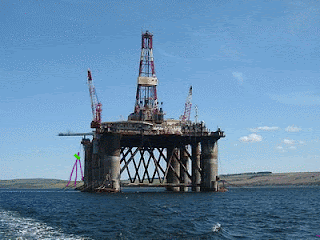This is a picture of congruent alternate interior angles. The are in the interior of the line, so are interior. They are also congruent to each other since they are seperated by a line. The purple marks represent the angles. This picture is obviously a window, a window is used so you can see out of it. I toook this picture with my phone in front of Severn School.
Friday, October 19, 2012
Thursday, October 18, 2012
congruent acute angles
This is a picture of congruent acute angles, they are all the same shape and measure so they are congruent to each other. This is a picture of chopsticks, so they can be found in the food industry. You can get them-not these in particular- at Panda Express or your favorite chinese food restaurant. Yum...
http://www.crookedbrains.net/2010/05/creative-chopsticks-design.html
http://www.crookedbrains.net/2010/05/creative-chopsticks-design.html
a line perpendicular to a plane
This is a picture I took with my own phone. It represents a line that is perpendicular to a plane. The line intersects the plane, making a right angle to the plane, which means it is perpendicular to the plane. This is a picture of a light "post" coming out of the ceiling used to hold a light fixture, maybe? It can be found in Dr. Chang's room.
skew lines
This is my own picture of my bedroom cabinets. These lines represent skew lines, which are lines that do not intersect and are not coplanar. The purple line represents the edge of my cabinet. The green line is on another plane, my window. The green line does not intersect with the purple line. I took this picture with my phone.
Segment bisector
This is my own image of a segment bisector, it is an image of my window shade. A window shade is used so you can control how much sun comes in and out. The blue line, the shade, is a segment. The red line is the bisector that divides in the segment in half. The purple lines represent congruent measures of the segment. This is my own photo from my phone.
Parallel lines
This is a picture of three parallel lines that are coplanar. These lines are from my bedding on my bed, so they are used for sleeping in comfort. The whole bed sheet serves as a plane, while the lines are in the plane. This is my own picture.
Tuesday, October 16, 2012
vertical angles
This i san image of blender blades, which have to do with the food industry. The blades are usually used for chopping up foods, they are not used as weapons in the upcoming Mission Impossible, so don't get confused. The purple lines represent vertical angles, meaning if they are the are on opposite sides and make an "X" looking thing. They are also congruent to each other.
http://www.alibaba.com/product-gs/203198523/blender_blade/showimage.html
http://www.alibaba.com/product-gs/203198523/blender_blade/showimage.html
Supplementary Angles that are not a linear pair
The image to the bottom right the picture for supp. angles that are not a linear pair. I had a little trouble cropping the rest of this picture. The purple angle represents an obtuse angle, while the green angle represents an acute angle. These angles are not on the same line, meaning that are NOT a linear pair. But, if you put the angles together then they add up to 180 degrees. This picture has to do with the medical industry, this bed usually has sick patients in it.
http://www.healthcomplex.biz/medical
http://www.healthcomplex.biz/medical
Angle bisector
This is the medical symbol. I am using it to demonstrate an angle bisector. the purple lines indicate the angle, which is a snake. The angle bisector cuts the angle in half, so, in this case that is the pole-or black line cuts the snake in half. This symbol is used for the medical industry to indicate things related to medicine. For example, this symbol is located on many ambulances to tell that it is part of a hospital.
http://www.climbingforchrist.org/Default.aspx?tabid=2690
Adjacent non-supplementry angles
This is an image of an oil rig in the Ocean. Towards the left of the picture, there are a few purple lines with a green dot, this represents adjacent non-supplementry angles. They both share a vertex-the green dot- meaning they are adjacent. But, the angles do not add up to 180 degrees meaning they are non-supplementry. This image also relates to the oil industry, this is how we can get oil from the ocean. I have no idea what the ropes that represent the angles have to do with the cranes.
http://www.bgs.ac.uk/falklands-oil/whats_newARCHIVE.htm
http://www.bgs.ac.uk/falklands-oil/whats_newARCHIVE.htm
Subscribe to:
Comments (Atom)









